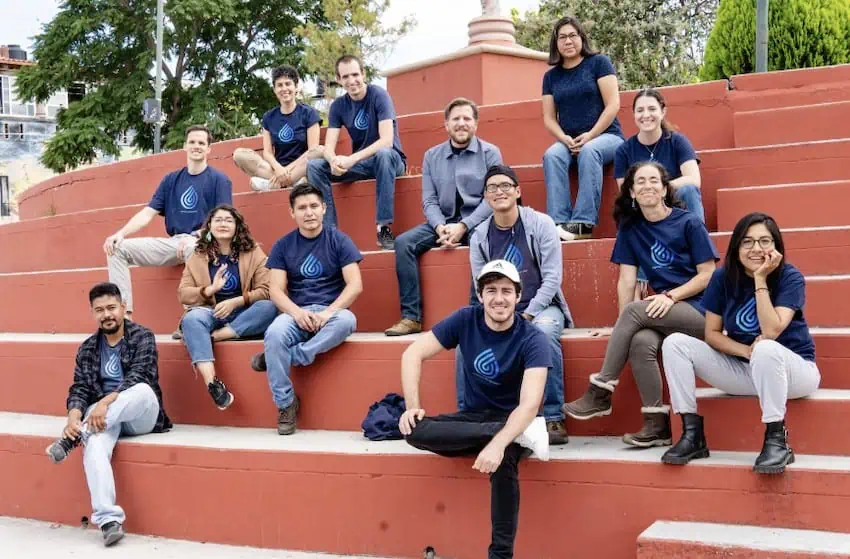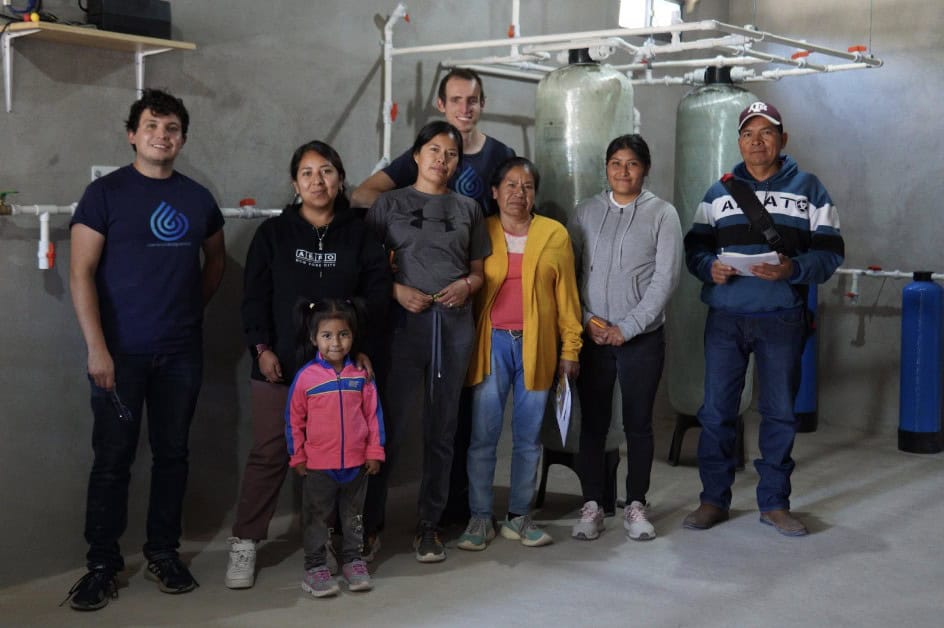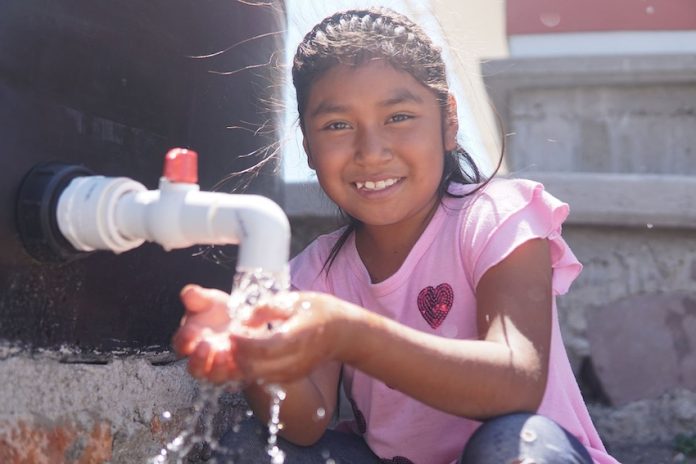In Mexico, water scarcity is increasing at an alarming rate. In the year 2000, 58% of Mexico’s municipalities had daily access to public sources of water and only 2% were limited to access 1-2 days per week. By 2022, according to an in-depth investigation by newspaper El País, the percentage of municipalities with daily access to water had fallen dramatically to 33%, while those limited to 1-2 days per week had risen nearly tenfold to 19%. The remaining 48% had access 3-5 days per week. More recent data is not available, but by all appearances, the trend is accelerating.
The situation in the state of Guanajuato is particularly dire. The only state with a higher water stress index is Baja California Sur. In Guanajuato, 65% of the state’s aquifers are overexploited, with water table levels dropping by 1-3 meters per year. In the Upper Rio Laja Watershed, for example, which serves 740,000 people, when residents drilled wells in the 1960s, they only had to go down 5-50 meters. By the 1980s, the population of the watershed was already over-extracting groundwater. Since then, the water table has dropped hundreds of meters, so current wells must be dug up to 500 meters deep.

Moreover, in Guanajuato, according to the State Water Commission, 84% of the groundwater extracted goes to agriculture, especially alfalfa, a water-intensive crop used to feed cattle.
Water scarcity leads to an even bigger problem: arsenic and fluoride contamination
Because wells must now be dug to such an extreme depth, we are accessing “fossil water” that has been held deep in the ground for tens of thousands of years, taking up minerals and metals from volcanic rock. Some, such as calcium and magnesium, are beneficial, but some absolutely are not: arsenic and fluoride. 61% of all wells tested by Caminos de Agua in the Upper Rio Laja Watershed demonstrated excessive levels of arsenic and/or fluoride. Arsenic levels of up to 23 times the allowable limit were discovered.
Across Mexico, 21 million people are exposed to excessive levels of arsenic and/or fluoride in their drinking water, as are 200-300 million people globally. The health impacts of excessive fluoride include irreversible dental fluorosis, whereby teeth turn brown and eventually crumble; crippling skeletal fluorosis, which is the weakening and deformation of bones; and cognitive developmental impairments and learning disabilities in children.
Arsenic causes skin cancer, gallbladder cancer, and possibly other cancers, as well as skin lesions, cognitive developmental delays, and kidney disease. Mexico has a higher rate of kidney disease than almost anywhere else in the world.
How to remove arsenic and fluoride from drinking water?
Removing arsenic and fluoride, along with other chemicals such as pesticides and nitrates from livestock farm runoff, is very difficult to do. Boiling water only concentrates the chemicals, and none of the usual water filters, which are effective on pathogens, remove these chemicals.
Therefore, Caminos de Agua, a small but impressively impactful nonprofit organization in San Miguel de Allende, Guanajuato, has brought to bear a wide range of resources to address the problem of arsenic and fluoride contamination. The team began by monitoring water quality at 600 sites throughout the Upper Rio Laja Watershed. Finding widespread contamination, they turned to installing rainwater catchment systems on the roofs of homes and schools to capture and store water that is inherently free of harmful chemicals, coupled with inexpensive ceramic filters to remove pathogens. By partnering with other water organizations throughout Mexico, they have impacted 45,000 people in this way.

Then they spent six years developing a community-scale groundwater treatment system specifically designed to remove arsenic and fluoride that is also adaptable for many other contaminants. Now, for the same cost as two rainwater catchment systems that serve two families, they can install a groundwater treatment system to serve 50 families. The design can be scaled for thousands of people. The systems are made from locally available materials, designed for easy maintenance, and proven in real-world conditions. In 2021, they installed their pilot system in the rural village of Los Ricos.
“The most important aspect of the system isn’t technical; it’s human,” noted Dylan Terrell, Executive Director and Founder of Caminos de Agua. “This system is owned and now completely operated by a group of local women who initially came together because they were concerned about the health of their children. Today they are in charge of their entire community’s first source of clean drinking water.”
The women learned to independently monitor the system, fix leaks, and troubleshoot. They monitor water quality and take payments, making the system operationally and economically sustainable over time. Each family in the community pays a nominal fee of 50 pesos per month.
“The system took time to build, and we built it together with community members, which is good, because technology alone is not a solution,” said Terrell. “If we’re going to solve these increasingly complex problems around water and other environmental challenges, we need to create this type of marriage between technology and humanity. We do that by designing technologies with the active involvement of the people most affected by the problems. That is how we create lasting solutions.”
“The two principles that drive our work in local communities are co-responsibility and respect,” emphasized Casilda Barajas, Director of Social Outreach. “Truly collaborative community partnerships may take longer to build, but they create the best path to sustainability.”

Caminos de Agua recently brought a second, larger groundwater treatment system online in March 2024 in the community of Alonso Yáñez, serving 270 families or approximately 1,500 people. They also launched a pioneering public health study in Alonso Yáñez in collaboration with researchers from Mexico’s National Institute of Public Health, Columbia University, and the University of Colorado. The researchers measure biomarkers for kidney damage in children who were exposed to fluoride levels more than five times higher than the allowable limit. They will subsequently assess changes in the children’s health after drinking clean water with the contamination removed.
“Our vision is to have 10 groundwater treatment units operational within the next 5 years, each one community-owned and operated, thereby demonstrating a scalable, autonomous solution to a critical global water quality challenge, creating both a technical and social blueprint for addressing these challenges in underserved communities throughout Mexico and beyond,” explained Terrell.
This year, Caminos de Agua will also continue to scale up their installation of rainwater catchment systems. “We are planning to construct a staggering 350 large-scale rainwater harvesting systems in 2024, complete with accompanying filtration.”

Terrell stresses that although the organization is having an impressive impact, much more work is needed by many actors to address the issue of contamination and overall water scarcity. Many people have urged the national government to pass laws to defragment water management in the country and better regulate water concessions in order to fulfill the human right to water enshrined in the Mexican constitution. Further, Terrell and other activists argue that agricultural producers must finally begin to pay for the water they use, which will incentivize them to pursue less water-intensive methods, leaving more water for direct human consumption.
In addition, massive investment in water infrastructure is needed throughout Mexico. Currently, a frustrating 40 percent of public water is lost to leaks. Due to underinvestment in water infrastructure over the last half-century, 57% of Mexico’s population still does not have access to safely managed drinking water, a shameful fact in a country with an economy as large as Mexico’s. That percentage is on par with some of the least developed countries in the world. As a result, Mexico is the world’s biggest consumer per capita of bottled water.
Water schools: finding a way forward
Educational efforts, including technical workshops and community-building initiatives, are an important part of Caminos de Agua’s work. This year, the organization is launching a three-year “Water School” initiative. Twenty instructors will train 30 young community organizers from throughout the Upper Rio Laja Watershed on watershed management, rainwater harvesting and filtration technologies, reforestation, composting toilets, community-scale retention ponds, and more.
“Through these efforts, we aim to foster a new cohort of community leaders committed to safeguarding our local resources into the future,” said Barajas.
To learn more about the water crisis and the innovative programs of Caminos de Agua, visit www.caminosdeagua.org.
Based in San Miguel de Allende, Ann Marie Jackson is a writer and NGO leader who previously worked for the U.S. Department of State. Her award-winning novel “The Broken Hummingbird,” which is set in San Miguel de Allende, came out in October 2023. Ann Marie can be reached through her website, annmariejacksonauthor.com.
